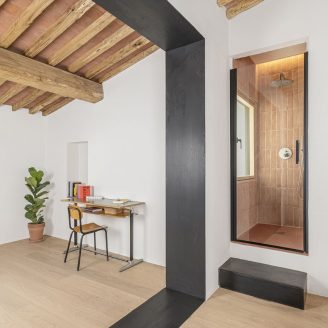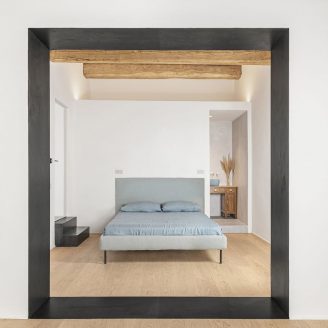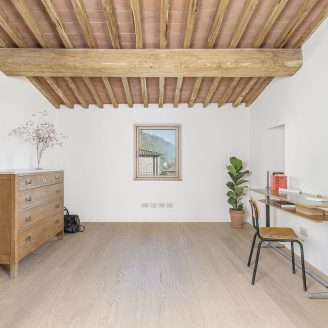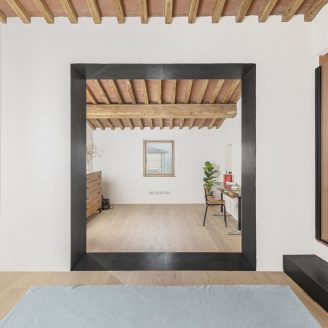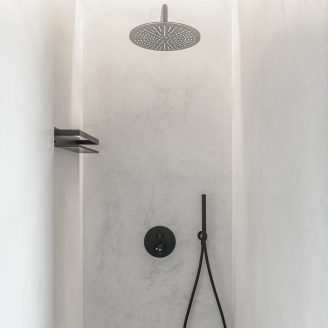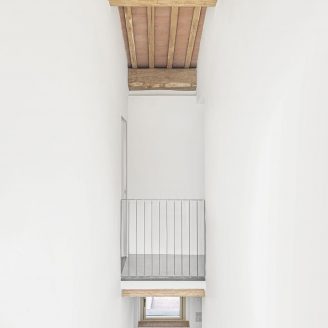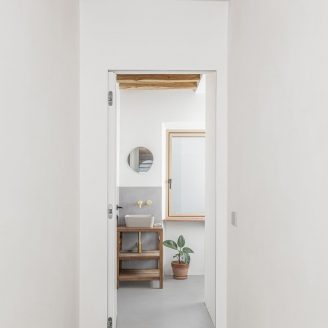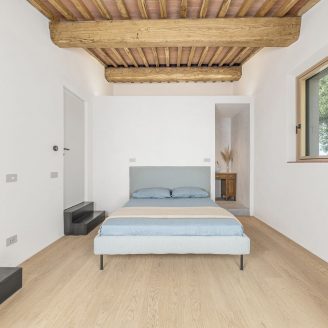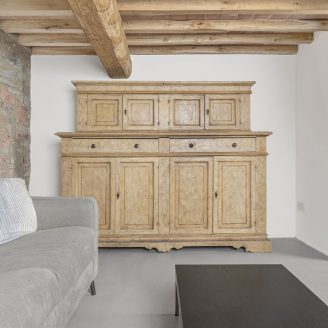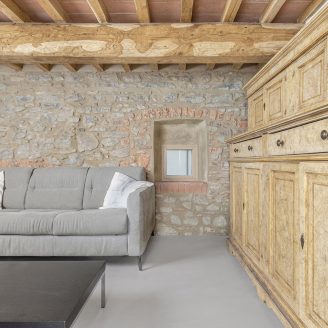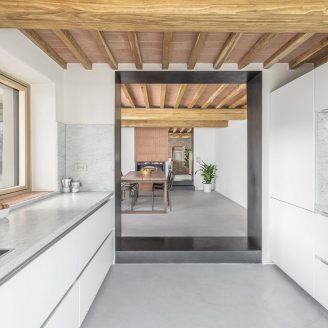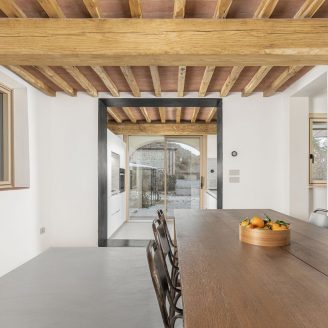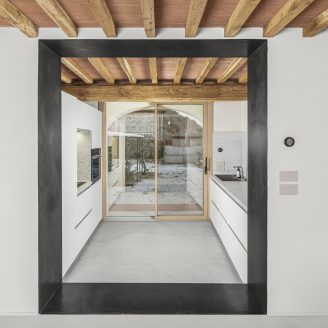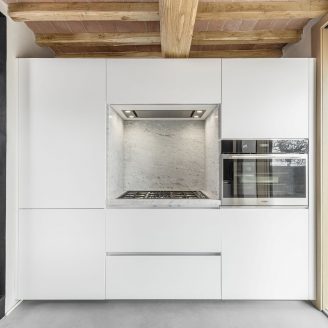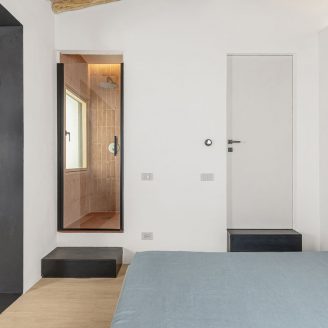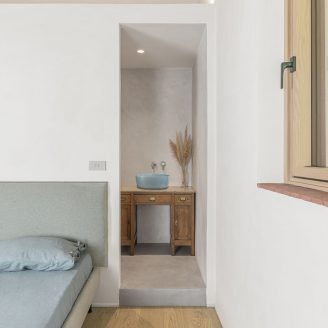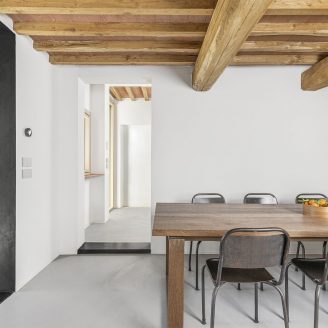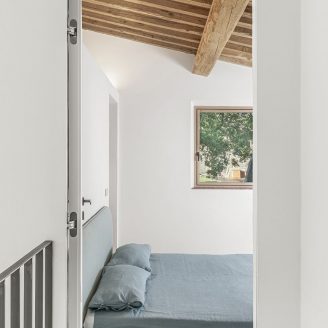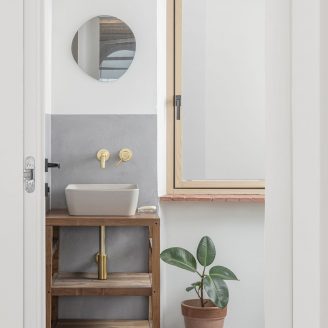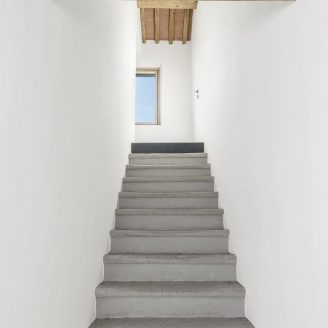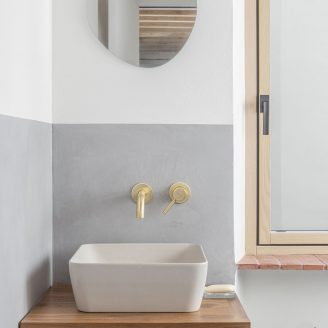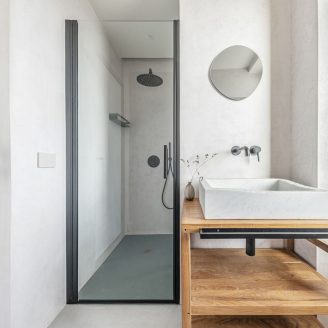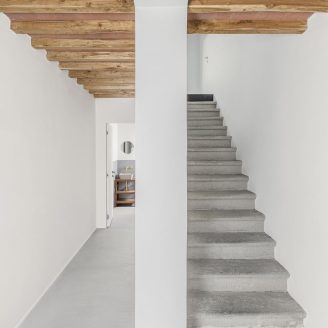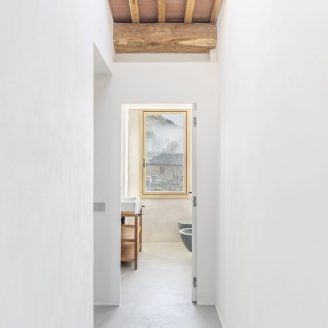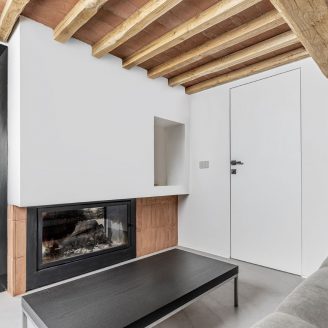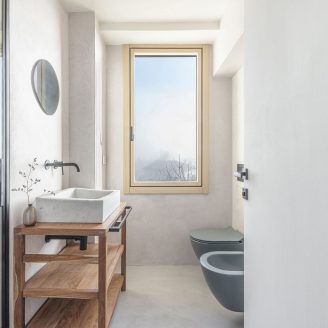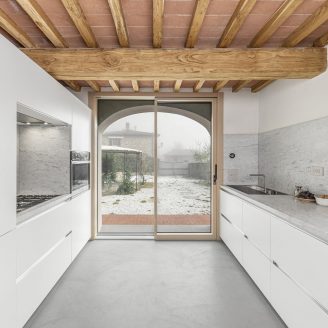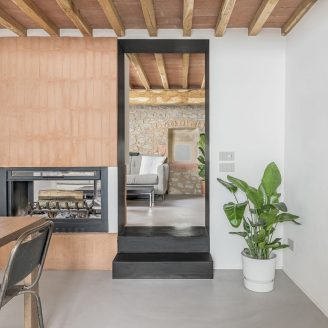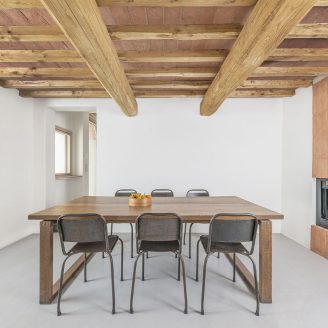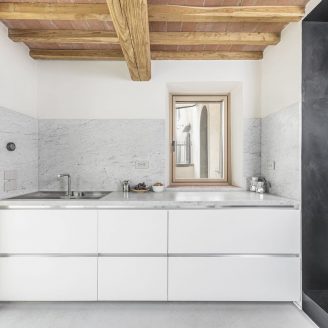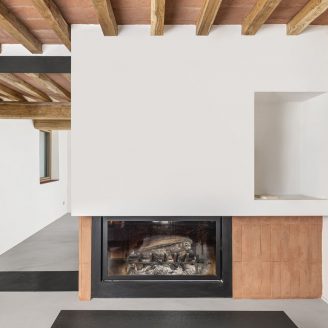Casa Citerna is the result of a renovation and energy redevelopment carried out by Officina Abitare on a private house located in the Florentine Chianti. The house was originally part of a historic building later divided into several units, where many transformations were made during the twentieth century, in contrast with the reference context.
The intervention started with the restoration of the historical character of the building both in spatial and construction terms, using traditional local materials (terracotta, lime, chestnut wood and stone) to create contemporary forms of living and promoting a widespread set of energy requalification interventions using natural materials of tradition.
Have been eliminated part of the fractions introduced by the twentieth century changes, to restore the continuity and spatial fluidity typical of these historic Chianti houses: on the ground floor, the living area consists of a single uninterrupted environment that from the entrance, overlooking the private garden behind, it develops without doors to all environments. The new living area is characterized by a triptych of rooms, kitchen-dining-living room, connected by new large square openings made in the historic walls, some of which pre-existing reopened. A new large double-sided fireplace, located in the same place as the historic fireplace, is a filter and a link between the latter and the living room.
The new large portals that unite the living areas have been embellished with a steel covering, thus testifying to the new intervention. During the construction work, old facade openings were then traced, restored in order to ensure a greater contribution of natural light and maximize the connection between the interior, the garden and the surrounding landscape.
To reach the sleeping area on the first floor, we have safeguarded the historic staircase made of blocks of stone. Also in this case, some twentieth-century works have been demolished to bring the space back to the original simplicity: the distribution now develops around a single bearing wall.
The sleeping area consists of three bedrooms, two of which have not been affected by spatial changes. The third room, the suite, was created from two adjoining bedrooms originally connected by a simple door: the intervention included the construction of a new large opening, that now connects the two rooms in order to create a fluid one that houses the double bedroom, and the private study of the client, a graphic designer who needed a private work space overlooking the quiet and bright back of the house
Inside the suite was introduced an additional toilet equipped with two washbasins and sanitary ware, which serves as a bed support wall. Also from the bedroom, you can then access the shower space that overlooks, through a dedicated window, the private garden. The new shower is characterized by a traditional Impruneta terracotta cigar coating, a material typical of the zero kilometer area that enhances the historical productions but with shapes and poses of the contemporary.
In addition to the aforementioned spatial modifications, all the slabs in laterocemento were demolished, and restored to the classical typology, or floors with main and secondary structure in local chestnut wood with a scaffold of handmade terracotta bricks produced at Impruneta. The same operation also involved the roof, which has been completely redone with wood and bricks, providing it with a large package of high density wood fiber insulation that guarantees both winter and summer performance.
The other aspect that the project has taken care of with particular attention is the energy efficiency of the building, through solutions and materials compatible with the historical context. Instead of creating an external thermal coat, which would have modified the shapes and thicknesses of the building, it was planned to lay, both internally and externally, a thermo-plaster in lime and cork, which perfectly adapts to the imperfections of the historic building, preserving its richness of chiaroscuro and difformity. The new single-leaf windows in wood and aluminum, in addition to enhancing energy performance, also allow to maximize the contribution of natural light.
Finally, the intervention provided for the replacement of the previous system with a heat pump that feeds a system of radiant panels; this solution was carried out to eliminate radiators and distribution elements, thus allowing a design of the spaces even cleaner, minimal and adherent to the history of the building.


